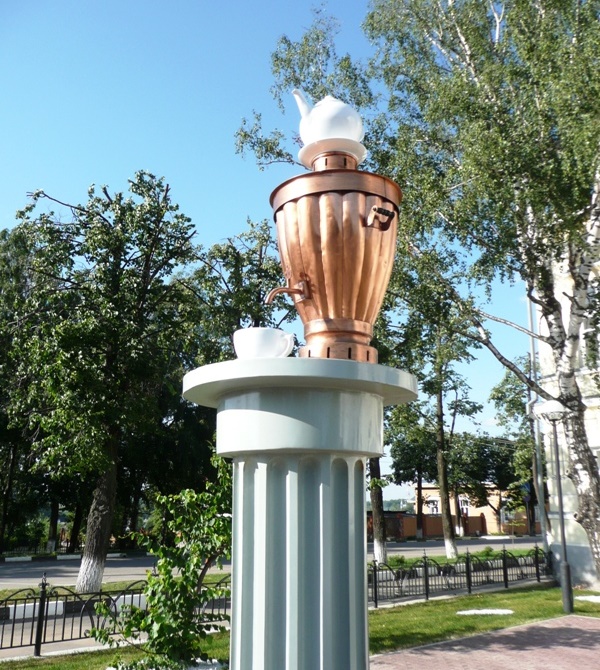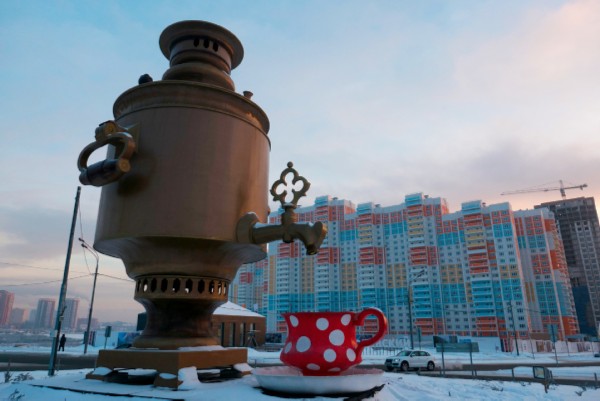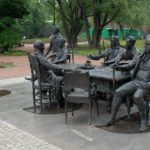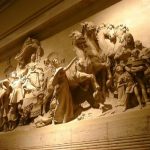Famous Russian Samovar monuments

Famous Russian Samovar monuments. Suksun, a city-type settlement in the Perm region of Russia, bears the name of “the capital of the Russian samovar.” Located on the left bank of the Sylva River (Chusovoy tributary), the city got its name from the Turkic word suksun, which means “jelly water”. Meanwhile, the found here copper deposits became the reason of establishing here a settlement and later a city (1651). Since the 17th century it was here that the production of samovars began.

The monument to the famous Suksun samovar appeared in 2006.
The author of the monument is the teacher of the Perm branch of the Russian Academy of Painting and Sculpture Ivan Ivanovich Storozhev. The monument to the samovar consists of 4 sculptures, which symbolize prosperity, strong family relations and hospitality. The height of the monument is 3 meters, and its weight is more than 900 kg.
Meanwhile, there is a popular belief that if to rub a Suksun samovar you will always be surrounded by friends and close people. In addition, on their wedding day the newlyweds come here to perform a kind of ritual. In particular, after holding on to the tap of the samovar, they make a wish and believe that their family life will be long and happy. Besides, the locals and guests of the city, in the hope of returning here again, fill a cup of tea with coins.
In fact, the Suksun samovar differs from other samovars in a shape. It is in the form of antique amphorae with highly raised graceful handles.
Until recently, the Suksun samovar monument was the largest in Russia. However, in 2008 in Yelabuga appeared a forged samovar about 4 meters height. The monument decorates the area in front of the hotel in Lenin Square as a symbol of hospitality of the Elabga residents.
Famous Russian Samovar monuments photo gallery:



























